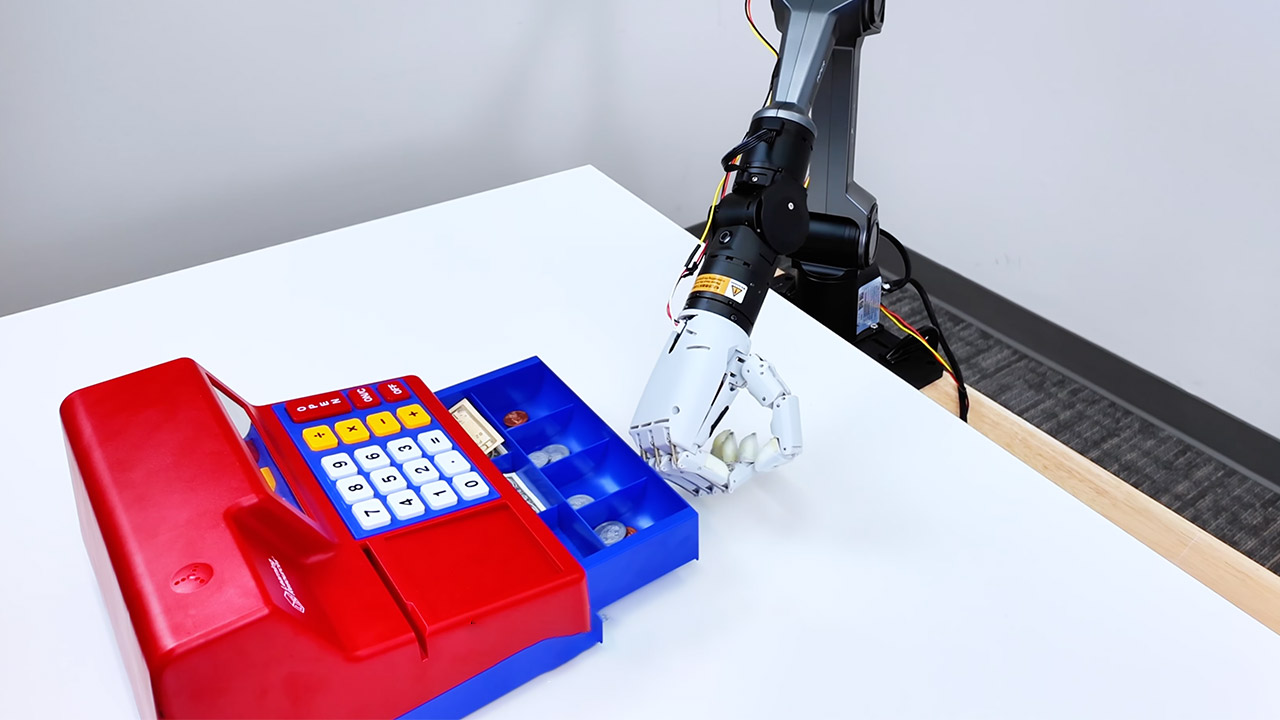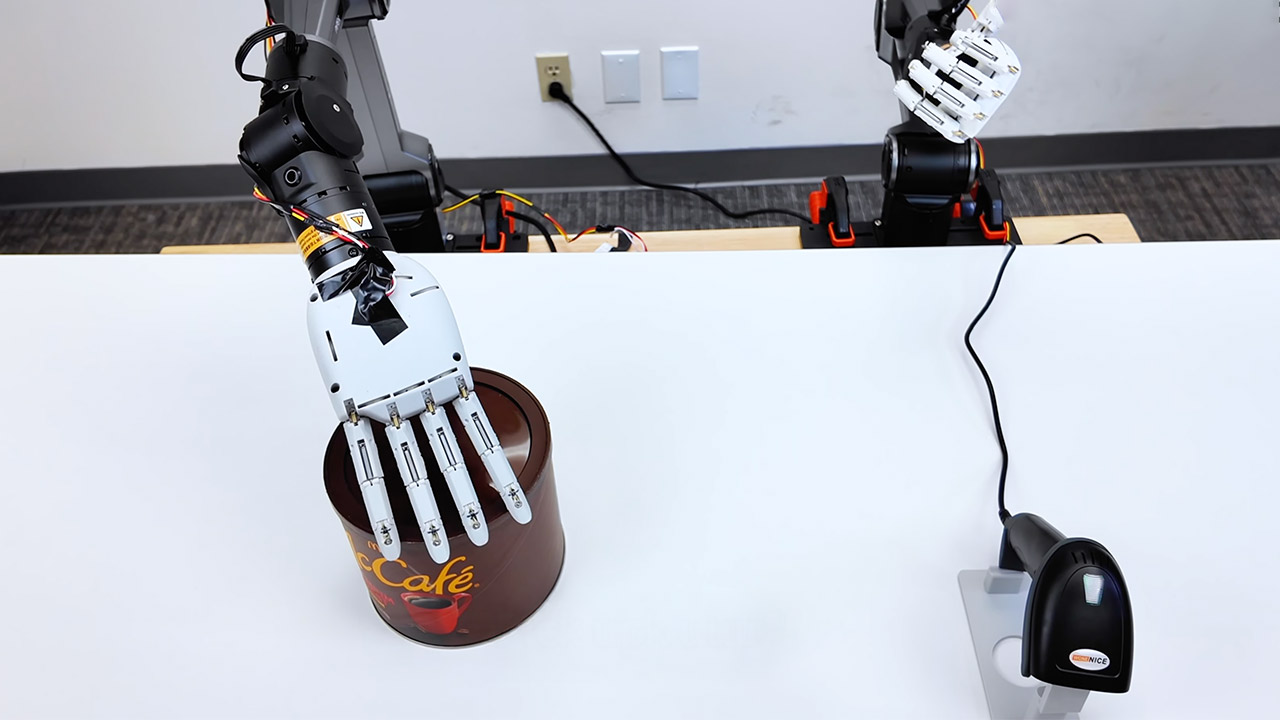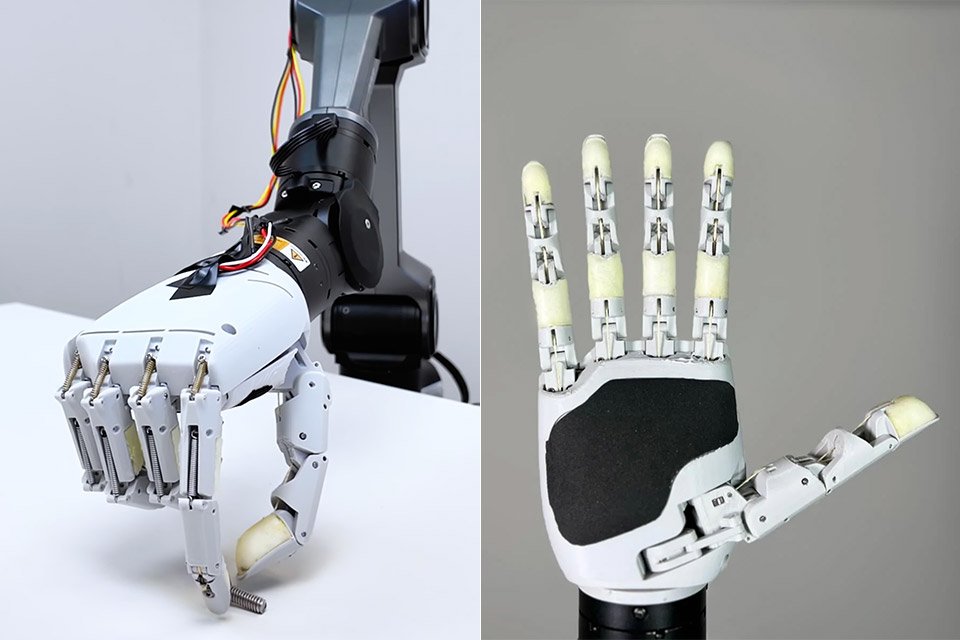Robotic hands have been in labs for decades but never quite escaped the high cost barrier that keeps them out of everyday makers. TetherIA, a small team working on making robots do real tasks, just changed that with the Aero Hand Open. This is a kit you can assemble yourself for $314 or fully built for a bit more. It’s tendon driven with 15 degrees of freedom total (7 that you control) and open sourced, or at least the electronics as well as software.
Xu Dong, TetherIA’s engineer in charge, spent months in the workshop perfecting this hand. His LinkedIn article last month made it clear: the team desired precision and true power, the kind that allows a robot to finger an M5 screw without fumbling or accidentally break a soda can. A video demo from the launch demonstrates just that: the fingers curl around that small fastener, tugging it loose with steady control. Another shows the hand lifting an iPhone from a table, balancing the weight across palm and tips without slipping.
Sale

ELEGOO Centauri Carbon 3D Printer, CoreXY 500mm/s High Speed Printing with Auto Calibration, 320°C…
- Print Right Out of the Box: ELEGOO Centauri Carbon arrives fully assembled and pre-calibrated, ready to go right away. With auto bed leveling,…
- Built for High-Speed Printing: Unlock ultra-fast printing with it’s advanced CoreXY structure, achieving up to 500 mm/s print speeds and 20000…
- High-Performance Material Ready: Equipped with a 320°C brass-hardened steel nozzle and enclosed chamber with enhanced cooling, Centauri Carbon is…
The Aero Hand’s advantage when dealing with unusual shapes stems from underactuation. Instead of motors in each joint, cables run through the fingers, allowing a single pull to bend many sections at once. You get compliance—the hand conforms to objects rather than resists them—which pays well in everyday grabs. Dong’s team built on years of expertise working with humanoid robots, simplifying the internals so that anyone with minimal equipment could link them. The CAD files are now accessible on GitHub, along with circuit board schematics and servo control code. ROS 2 support will be available shortly, allowing you to attach it to a standard robot arm and begin programming behaviors without rewriting the wheel.


Just insert it into your USB-C port, and the hand comes to life, reacting to every order; even the individual fingers curl up without difficulty. Built to be extremely lightweight at 450 grams, this hand will fit perfectly on some of the low-cost open-source arms available. Of course, keeping costs low means it doesn’t come with a ton of fancy sensors – but hey, you can always add them later if you want.
TetherIA went beyond simply assembling hardware. They even went so far as to run the code on a regular old Arduino chip, which is completely customizable from your laptop, allowing you to change parameters to have your hand moving faster or with a better grip. Simply open the code, mess with the values for as long as it takes to get it correct, and then flash it onto the chip – your hand will adapt on the fly.
